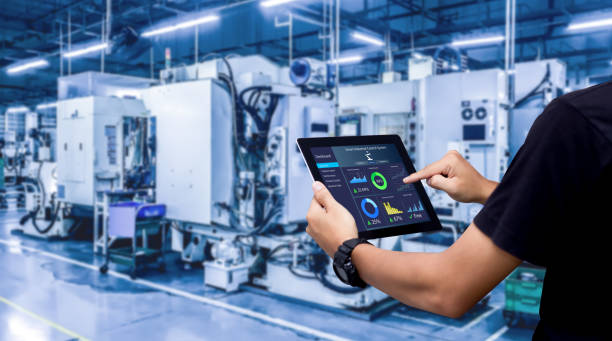Holographic Opera: A New Dimension in Musical Performance
In the ever-evolving landscape of artistic expression, a groundbreaking fusion of technology and classical art form is captivating audiences worldwide. Holographic opera, a cutting-edge blend of traditional operatic performance and state-of-the-art holographic projections, is redefining the boundaries of musical theater. This innovative approach not only preserves the rich heritage of opera but also propels it into the future, offering a mesmerizing spectacle that appeals to both seasoned opera enthusiasts and a new generation of tech-savvy viewers. As holographic opera gains momentum, it promises to revolutionize the way we experience and appreciate this centuries-old art form.

The first full-scale holographic opera production, a reimagining of Wagner’s Ring Cycle, debuted in 2015 at the Berlin State Opera. This groundbreaking performance featured holographic scenery and characters interacting seamlessly with live performers, stunning audiences and critics alike. The success of this production sparked a wave of interest in holographic opera, leading to rapid advancements in both the technology and artistic applications.
Technological Marvels Behind the Curtain
At the heart of holographic opera lies a complex array of technologies working in harmony to create a seamless illusion. High-powered laser projectors, advanced motion capture systems, and real-time rendering engines form the backbone of these productions. Custom-designed transparent screens, often made of specially treated glass or advanced polymer materials, serve as the canvas for the holographic projections.
One of the most crucial technological aspects is the precise synchronization between the live performers and the holographic elements. Sophisticated tracking systems monitor the movements of singers and musicians in real-time, allowing the holographic projections to respond and interact naturally. This seamless integration creates a truly immersive experience, blurring the lines between the physical and digital realms.
Artistic Possibilities Unleashed
Holographic opera opens up a world of creative possibilities that were previously unimaginable. Directors and set designers now have the freedom to create fantastical environments that transform instantly, defying the limitations of traditional stage design. Mythical creatures can come to life, abstract concepts can be visualized, and entire worlds can be built and destroyed in the blink of an eye.
This technology also allows for innovative storytelling techniques. Multiple timelines can be presented simultaneously, characters can interact with their past or future selves, and the boundaries between reality and fantasy can be explored in profound new ways. Composers and librettists are now creating works specifically tailored to the unique capabilities of holographic opera, pushing the boundaries of narrative structure and musical composition.
Challenges and Controversies
Despite its potential, holographic opera has faced its share of challenges and controversies. Purists argue that the technology detracts from the raw power of live vocal performance, while others express concerns about the potential loss of traditional stagecraft skills. There are also practical challenges, such as the high costs associated with the technology and the need for specialized venues capable of hosting these complex productions.
Another point of contention is the use of holographic representations of deceased opera stars. While some view this as a way to preserve and celebrate legendary performances, others see it as ethically questionable and potentially disrespectful to the artists’ legacies. This debate continues to shape the development and acceptance of holographic opera in the broader artistic community.
The Future of Holographic Opera
As technology continues to advance, the future of holographic opera looks increasingly bright. Ongoing research in fields such as augmented reality and artificial intelligence promises to further enhance the immersive quality of these performances. Some experts predict that future productions may incorporate personalized elements for each audience member, creating a truly unique experience for every viewer.
The potential for global accessibility is another exciting prospect. With the development of more sophisticated streaming technologies, holographic opera performances could be transmitted worldwide in real-time, allowing audiences around the globe to experience these spectacular productions simultaneously. This could democratize access to opera, bringing this art form to new and diverse audiences.
Impact on the Opera Industry
The rise of holographic opera is having a profound impact on the broader opera industry. Traditional opera houses are investing in the necessary technology to stage these productions, while new purpose-built venues are emerging specifically designed for holographic performances. This shift is creating new job opportunities in areas such as digital set design, holographic animation, and technical production.
Moreover, holographic opera is attracting a younger, more tech-savvy audience to an art form that has long struggled with an aging demographic. This influx of new patrons is breathing fresh life into the opera world, encouraging innovation and experimentation across the industry. As a result, even traditional productions are incorporating more technological elements, blending the classical with the contemporary.
Educational and Outreach Potential
Holographic opera also holds significant potential in the realms of education and outreach. The technology can be used to create immersive educational experiences, allowing students to step into the world of famous operas or explore the historical contexts in which they were created. This interactive approach to learning about opera could inspire a new generation of enthusiasts and performers.
Furthermore, holographic technology could make opera more accessible to people with disabilities. For instance, sign language interpreters could be holographically integrated into performances, or visual elements could be enhanced for viewers with hearing impairments. These applications demonstrate how holographic opera can not only entertain but also serve as a tool for greater inclusivity in the arts.
Critical Reception and Artistic Debate
The critical reception of holographic opera has been mixed but largely positive. Many reviewers praise the innovative approach and the new dimensions it brings to storytelling in opera. They argue that the technology, when used judiciously, can enhance the emotional impact of performances and create truly unforgettable experiences.
However, some critics worry about the potential for technological spectacle to overshadow the fundamental elements of opera - the music and the human voice. This has sparked a lively debate in the opera community about the balance between tradition and innovation, and the role of technology in classical art forms. As holographic opera continues to evolve, these discussions are shaping its development and helping to refine its artistic direction.
Conclusion
Holographic opera represents a bold step into the future of musical performance, blending centuries-old traditions with cutting-edge technology. As it continues to develop and mature, this innovative art form has the potential to revitalize opera for the 21st century, attracting new audiences while offering fresh creative possibilities to artists and composers. While challenges and debates persist, the undeniable impact of holographic opera on the artistic landscape suggests that it will play a significant role in shaping the future of musical theater. As technology and artistry continue to intertwine, we can expect to see even more breathtaking and immersive operatic experiences that push the boundaries of what is possible on stage.





